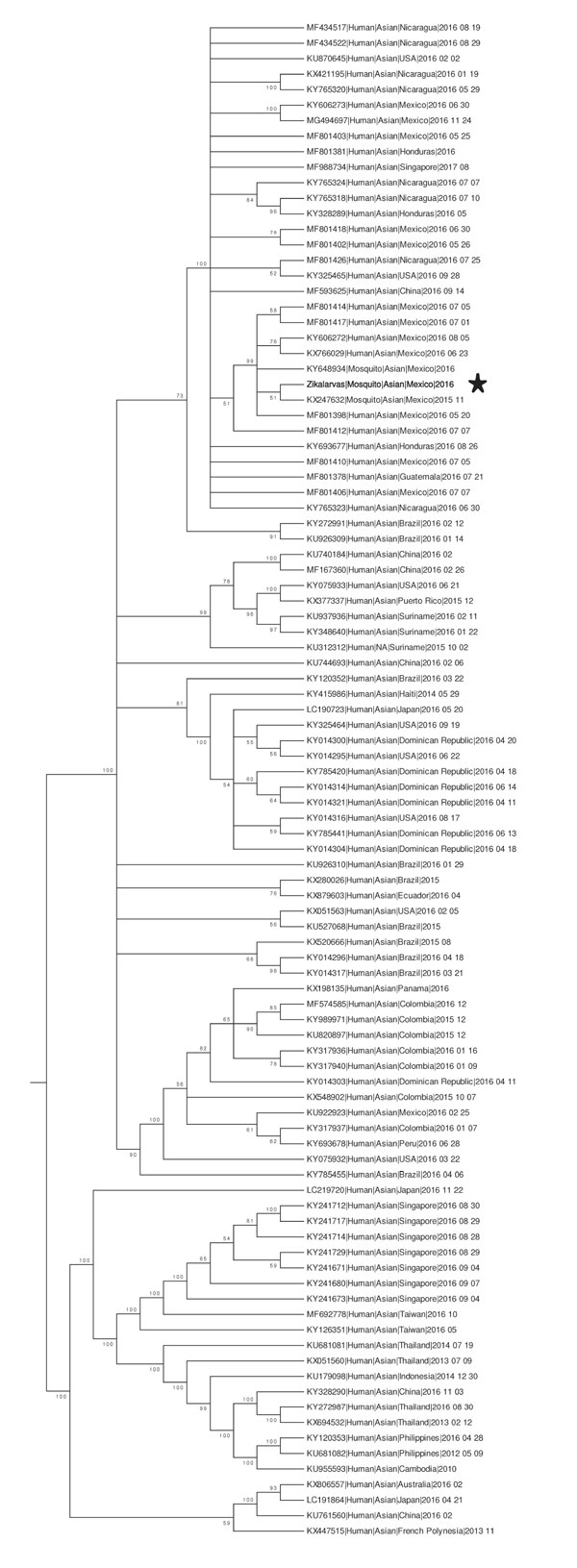Volume 25, Number 8—August 2019
Research
Natural Vertical Transmission of Zika Virus in Larval Aedes aegypti Populations, Morelos, Mexico
Figure 3

Figure 3. Condensed phylogenetic reconstruction of selected complete Zika virus genomes. This tree depicts the phylogenetic relationships between Zika virus isolate 31N from an Aedes aegypti larval pool, Jojutla, Morelos, Mexico (bold), and 98 complete genome sequences of Zika viruses obtained from the Virus Pathogen Resource database. GenBank accession numbers are provided. Nodes with bootstrap values support <50% were condensed and branch lengths were normalized to emphasize tree topology.
Page created: July 16, 2019
Page updated: July 16, 2019
Page reviewed: July 16, 2019
The conclusions, findings, and opinions expressed by authors contributing to this journal do not necessarily reflect the official position of the U.S. Department of Health and Human Services, the Public Health Service, the Centers for Disease Control and Prevention, or the authors' affiliated institutions. Use of trade names is for identification only and does not imply endorsement by any of the groups named above.